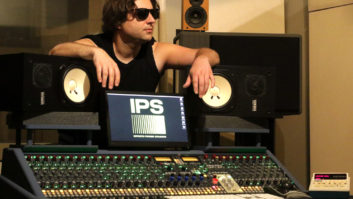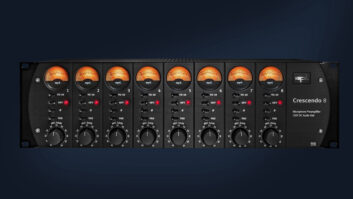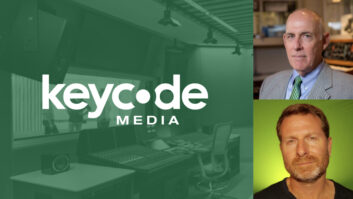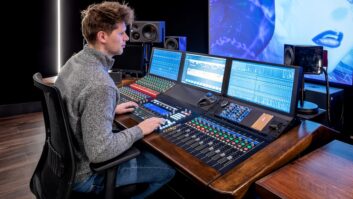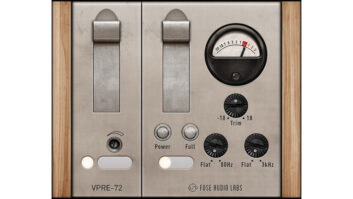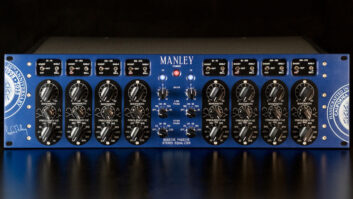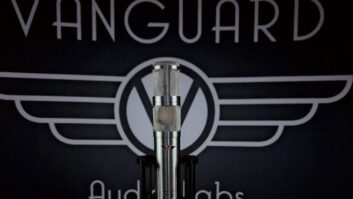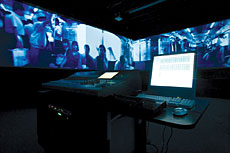
Surround Traffic Control
“We’re cultivating methodologies for an A/V institute of experiential engineering,” says Recombinant Media Labs (http://recombinantmedia.net/) founder and conductor Naut Humon. Lofty words to be sure, yet this is an entirely fitting description of the work happening in this San Francisco audio/visual production and research facility.
Humon is known in many circles as an “inter-media” pioneer through decades of work with projects such as the electronic ensemble Rhythm and Noise and the abstract audio group Cellar M. However, he found even earlier career success creating immersive multimedia theater projects such as “audience mobilization and abduction events,” in which observers were transported through custom-constructed indoor and outdoor locations. These ‘70s and ‘80s experiments led to the ‘90s presentation of the “Sound Traffic Control” project, which depicted the metaphor of a virtual sonic “airport” where various music cargo would land, taxi and take off from an imaginary runway filled by roaming audience “passengers” amid dynamic audio trajectories. This “immersive orchestral” concept was realized in a 1991 Tokyo spectacle, complete with a symphony of 800 speakers and a corroded air traffic control tower. This “Recombinant” event toured the international festival circuit and featured many of the artists on the Asphodel Records label founded by Humon’s partner, Mitzi Johnson; Johnson and Humon later installed a permanent performance and exhibition arts center in San Francisco dedicated to the exploration of spatial media synthesis through an elaborate multichannel surround cinema environment.

Naut Humon
“Our emphasis is to build a bridge between the cultural, commercial and educational worlds,” explains Humon. On the “conventional” side of things, Asphodel Studios features a hot-rodded Neve VR-72 with Flying Faders, a 48-channel Pro Tools HD Accel system with Apogee converters, PMC and Dynaudio monitoring, an extensive plug-in collection and a host of outboard gear from Manley, Crane Song, GML, Pendulum, Lexicon, Universal Audio and others. There’s also a lavishly equipped video editing suite and a modular analog and software synthesizer chamber. “Those rooms work well for clients, advancing recording, mixing and audio to image soundtracks or gaming DVD possibilities beyond the realm of the popular home or public studio market,” says Humon, who cites as an example a recent undertaking with Lou Reed overseeing the mix of German ensemble Zeitkratzer’s arrangement of Reed’s 1975 landmark noise album Metal Music Machine for live strings, brass and strummed piano interiors.
At Humon’s facility, that would be on the traditional side. Down the hall, a large, flexible black box theater venue houses a full-fidelity 16.8.2-channel L-Acoustics P.A. array and a high-definition 10-screen Optima video projection system that displays panoramas up to 360 degrees. This configuration constitutes a rectangular room specification for the updated Surround Traffic Control cinesonic system.

The Neve VR-72 in Studio A
Humon describes RML’s surround model as a “hybrid of different spatial techniques,” ranging from traditional vector-based panning to targeting spherical harmonics and phase relationships via Ambisonics soundfield resynthesis technologies. One example of these immersive modes is wavefield synthesis, which uses clusters of speakers that pixelate a localized “periphonic image.” So what does all this spatial media synthesis mean to the observer? Put simply, the ultimate surround cinematic experience.
“In most film theaters, you have various setups of speakers; usually it’s 5.1 or 7.1 along with a single large screen,” explains Humon. “We’ve expanded ours out to be a scalable format for up to 16 channels going around the room, where there’s a cubic formation featuring eight speakers in a circle above the screens and eight below to permit 3-D X, Y and Z audio trajectories for horizontal, vertical and diagonally directed sound.” Thirty-two additional transducers under the carpeted floor deal with the vibration of bass as a discrete element, along with an extra 8.2 channels for sculpting multiple mono and stereo crossovers for infra-bass. Max MSP, Supercollider, PD and Kyma platforms are also used to write custom spatial DSP software, including Immersive Media Research (http://im-research.com).
To some, RML’s Surround Traffic Control matrix might seem esoteric, but Humon visualizes mass-market potential. “We’re blessed to be working with vast resources and abilities, but we don’t want this to become a place of technological exposition,” he insists. “This lab exists for the purpose of creating aesthetic concepts and content that become the substance of the great music and visual experiences that we will remember in our lives. If the global artists in residency here can paint their open canvas with some fresher tools and transfer and scale these performances to other venues and festivals, we can help to inspire those who will dare to build similar sites with our architectural models.”
